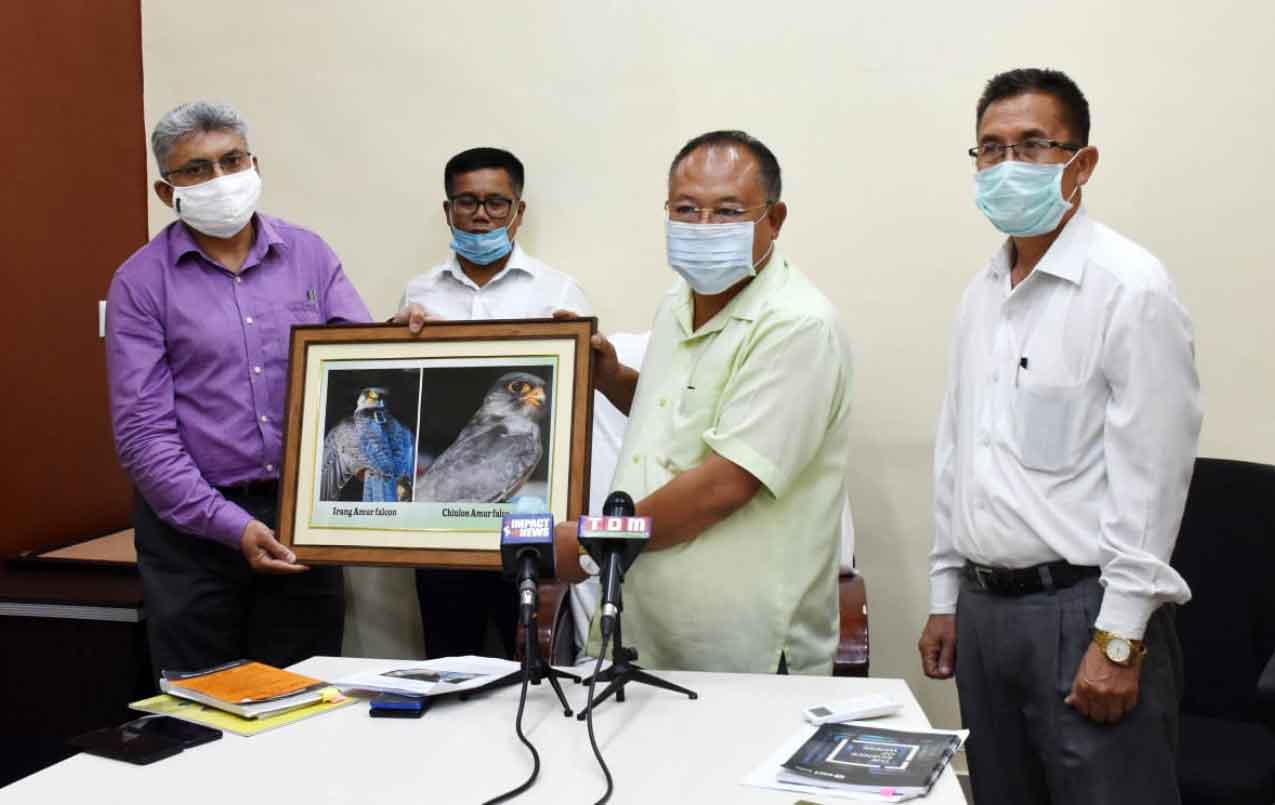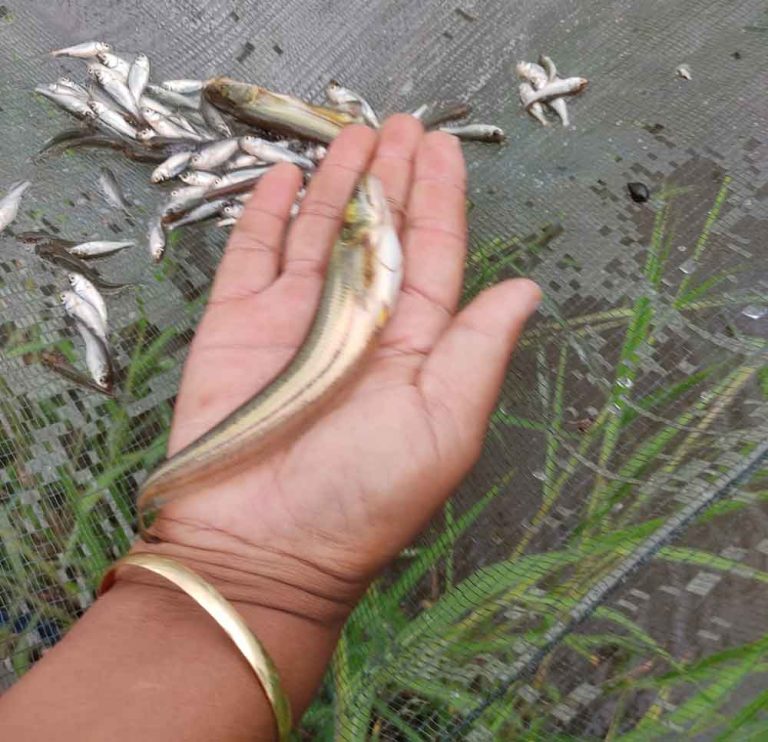Imphal: Forest, environment and climate change minister Awangbow Newmai on Tuesday said the successful return of the two satellite tagged Amur Falcons – Irang and Chiuluan have put Manipur in the global map of wildlife conservation efforts.
He said it is a proud moment for the Forest Department and State that the Amur Falcons have returned back after completing its marathon journey to its roosting site in Puching village in Tamenglong district, the village where it was tagged with satellite transmitters and released last year.
Addressing the mediapersons at his New Secretariat office, Minister Awangbow Newmai said that the success story of the satellite tagging of the Amur Falcons have ignited hope that the other wildlife projects like Hornbill project, Tiger project among others can also be a successful projects. He assured that more conservation efforts will be carried out for the migratory birds and other endangered animals in the State.
Seeking support from the public, he said without the cooperation from all the stakeholders the conservation efforts of the department will not be successful. Giving credit to the general public, all the stakeholders and media, he said that the number of migratory birds visiting the Loktak Lake has increased this year following awareness among the general public.
He informed that after completion of 361 days Puching bird reached Puching village on Oct 26, 2020 from where it was satellite tagged and released last year. Meanwhile Irang arrived in Puching village on Oct 27, 2020. It is worth mentioning here that the two Amur Falcons named Puching and Irang were satellite tagged by experts of the Wildlife Institute of India (WII) along with the officials of the Tamenglong Forest Division on Oct 31st, 2019. Three more birds namely Barak, Phalong and Chiuluan were satellite tagged and released on November 1st, 2019.
Minister Awangbow Newmai said the two satellite tagged Amur Falcons were traced for five days before it got disappeared. He said the satellite tagged Barak was successfully traced till May 29, 2020 before it disappeared likely in a cyclone on its migratory route.
Stating that Manipur has set a successful example in the global conservation map, he said the State has shown the effort to protect and provide safe bases to the migratory bird Amur Falcons. He credited the NGOs including Rainforest Club Tamenglong, local people, district administration and media for their involvement in raising awareness regarding protection and conservation of the Amur Falcons which migrate in number of lakhs during mid October in Tamenglong district.
He said the birds, known locally as ‘Akhoipuina’ or ‘Ahoipuina’ in Rongmei dialect roost in the villages of Tamenglong along the Barak river and its tributaries. The birds then migrate to South Africa for which they fly non-stop over the Arabian Sea for five days, he added.
Dr. AK Joshi, PCCF, Wildlife said that the Forest Department started the work on conservation of the Amur Falcons in Manipur in 2015, where as the conservation work started in Nagaland in 2012 after a uproar following hunting of large number of the birds. He said that the Amur Falcons start their journey from their breeding ground in North China/Siberia/Northern Mangolian region after that they cross over to Myanmar and arrive in North East India for resting and roosting before they make long flight to Southern Africa.
He said the Amur Falcon is protected under both the Wildlife (Protection) Act, 1972 and is included in the Schedule IV of the Act and India is a signatory to the Convention on Migratory Species (CMS), it is mandatory to provide them safe passage and ensure their protection and conservation during their migration. He said the satellite tagging of the birds started in 2018 in Manipur where it started in Nagaland in 2013. He said he is satisfied with the conservation effort of the Amur Falcons and appealed for the general public to support the department for protection, preservation and conservation of the migratory bird.
Amur Falcons weighing on average 170 grams are long-distance migratory birds and arrives in North East India mainly in Manipur and Nagaland on their south-bound migration during October from their breeding grounds in Northern China, Eastern Mongolia and far East Russia en-route to their wintering grounds in South Africa. The one-way journey from their breeding to wintering grounds via India is about 20,000 kms and the birds do this twice a year.
Amur Falcons spend three to four weeks in many parts of Manipur to build fat reserves by foraging on termites that emerge during this time. As a result, this stop-over site in North East India becomes extremely crucial to the Amur Falcons as they need to make a five to six days non-stop flight across the Peninsular India and then make a sea crossing over the Arabian Sea to their next stop-over site in South African continent. (DIPR)












+ There are no comments
Add yours